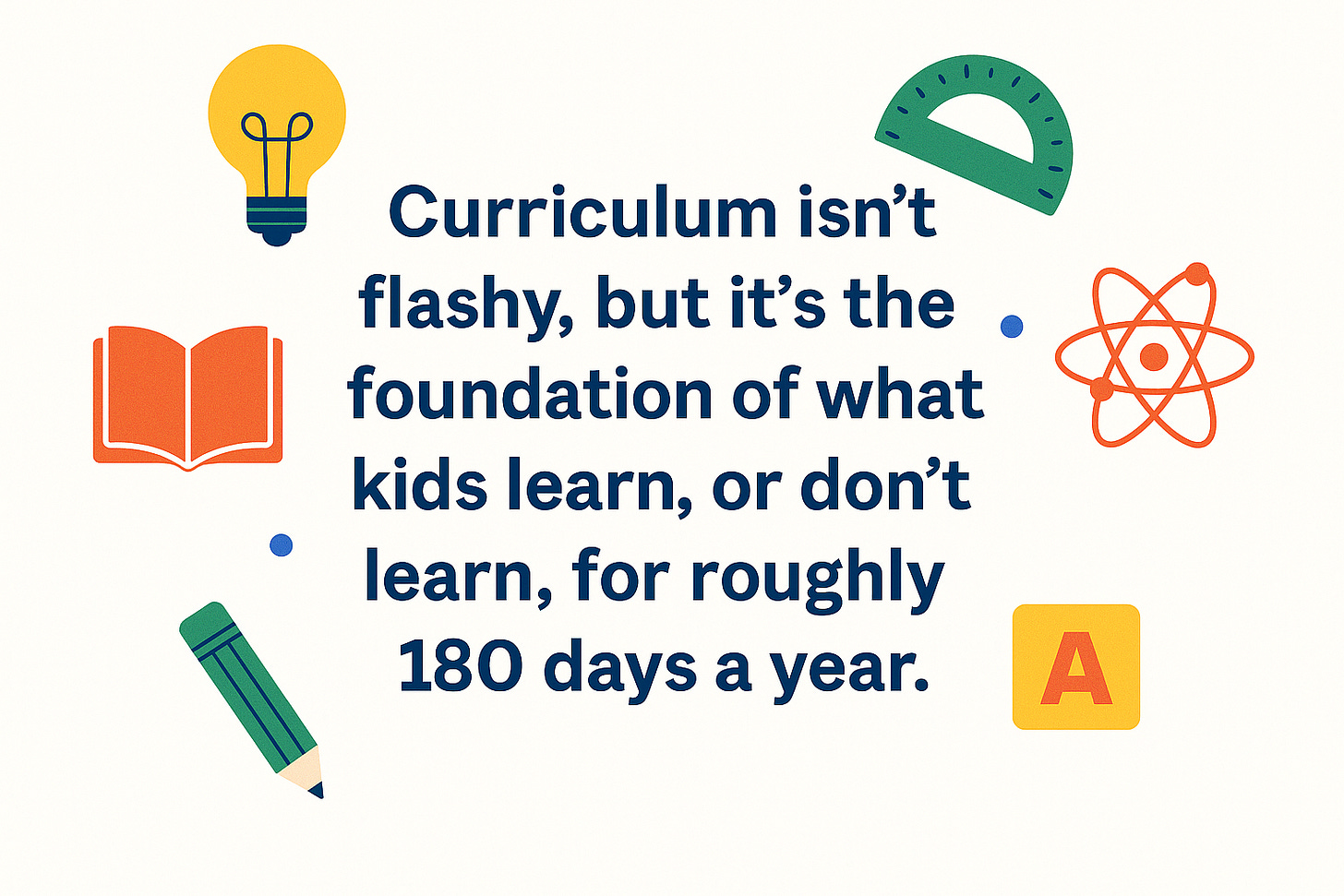Why Curriculum Matters
Even If You’ve Never Thought About It
When choosing a school, most parents focus on things like class size, safety, sports, or test scores. But how often do we ask: what will our kids learn?
My daughter is still a few years away from kindergarten, but my wife and I are talking about this now, and the idea of starting this newsletter is part of what’s come out of our conversations.
Curriculum isn’t flashy, but it’s the foundation of what kids learn, or don’t learn, for roughly 180 days a year. (This is the average length of the school year according to the Pew Research Center) Parents may be more aware of standards for their particular district. But standards aren’t curriculum. Standards set the big picture goals; curriculum deals with what’s taught every school day.
When school districts get a curriculum wrong, the impact isn’t abstract. It shows up in reading struggles, confusion in math, and more. A lack of a coherent curriculum leads to too many kids ending up with a shaky academic foundation that can set them on a difficult path for years. Not all of us can afford a private school, but every kid deserves a solid education, no matter their zip code. A solid education starts with a coherent curriculum.
I’m diving into the definition of curriculum because I want to understand why we got here and how we can help schools get back on track. I know other families, teachers, and concerned citizens also want to understand. We can do better, not just for my daughter, but for every kid walking into a classroom.
Whether we’re trying to fix struggling schools or strengthen a great one, we need to understand what drives learning. So next time, we’ll ask the question that few seem to define: What is curriculum?


